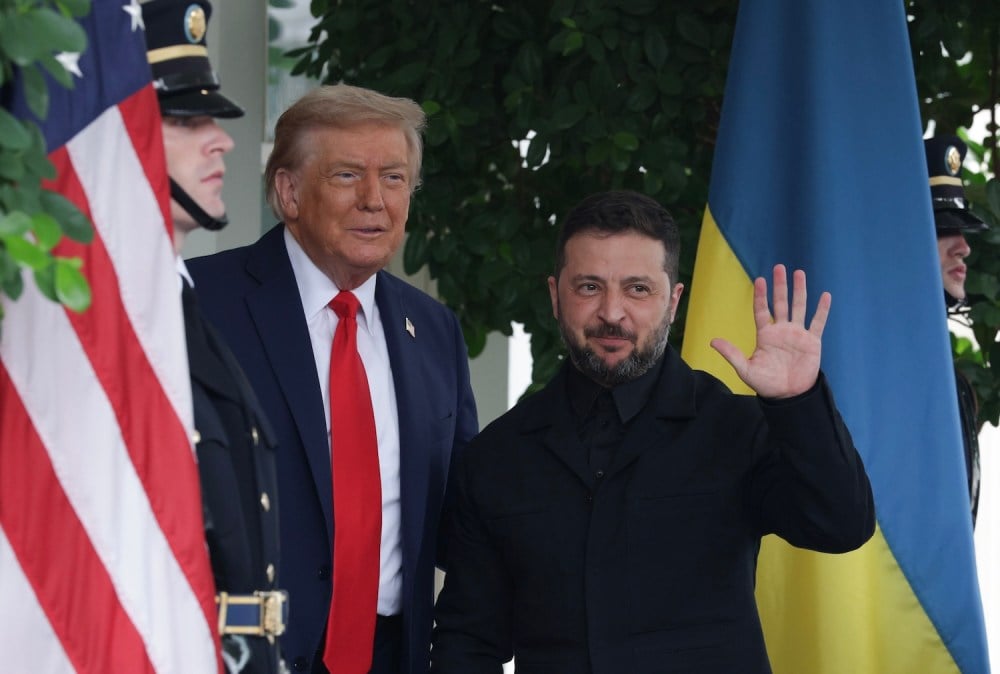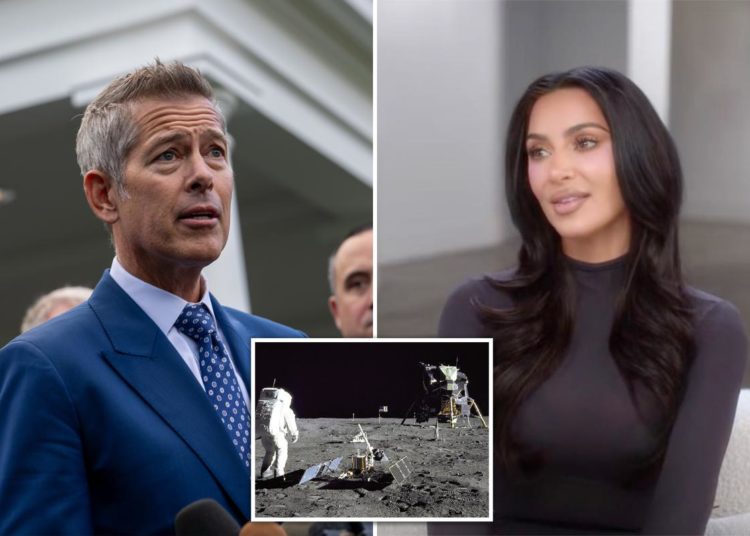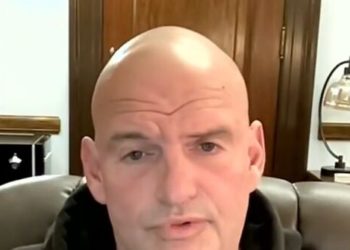U.S. President Donald Trump is personally undertaking a flurry of diplomatic moves to try to find a path to ending Russia’s war in Ukraine. After hosting Russian President Vladimir Putin in Alaska on Friday, Trump on Monday welcomed Ukrainian President Volodymyr Zelensky, as well as the leaders of Britain, Finland, France, Italy, Germany, NATO, and the European Commission, in Washington for further talks.
On the latest episode of FP Live, which aired on the morning of Monday, Aug. 18, I spoke with two experts who have closely followed the conflict and its history: Andrea Kendall-Taylor, a former CIA analyst focused on Russia, and Sergey Radchenko, a professor at Johns Hopkins University and the author of To Run the World: The Kremlin’s Cold War Bid for Global Power. Subscribers can watch the full discussion on the video box atop this page. What follows here is a condensed and lightly edited transcript.
Ravi Agrawal: Andrea, I was so struck by the image of Trump receiving Putin on Friday on a literal red carpet, clapping his hands. Putin is, of course, a war criminal. And we know both he and Trump care about the value of symbolism. Reflect on Friday’s scenes.
Andrea Kendall-Taylor: They were nothing short of remarkable. There was such pageantry associated with the visit. And it was quite shocking to see the way that Trump welcomed the Russian leader. Even people who don’t see a problem communicating and using diplomacy during crises recognize that you don’t have to applaud and clap and celebrate the arrival of a war criminal. So that was really shocking.
I’m actually in Europe right now. Many European colleagues also found the imagery shocking. And it really undermines perceptions of U.S. leadership. It has called into question where the U.S. is heading and its reliability as a partner. So it sent shockwaves through our alliance.
RA: Sergey, you are so steeped in Soviet history. So much of the Alaska summit felt like a blast from the past.
Sergey Radchenko: Ravi, it did, and it was intended to, from Russia’s perspective. Putin went to Alaska to stand in glory next to the American president. And that, of course, is something that he craves. He has wanted recognition as America’s equal for a long time. The fact that Europeans were not represented there obviously gave Putin prestige and confidence to tell his domestic audience, “They cannot shun us any longer, and Russia is standing here in glory.” There is a historical tradition going back to Cold War summits where meetings with the American leaders represented an opportunity to raise their country up and to show it as one of the great powers in the world.
RA: Andrea, at the press conference on Friday, it was telling that neither Trump nor Putin took reporters’ questions, and their remarks were vague. But we now know that they were unable to agree on a cease-fire as a first step and talked about going straight to a peace deal. Meanwhile, Putin continued his attacks on Ukraine on Monday morning. Did Trump get played here?
AKT: Without a doubt. The worst fears of the analytic community going into the summit now appear to be in play. For starters, it was the pageantry that we talked about. Putin was able to secure this meeting on U.S. soil with the U.S. leader. He stood on the stage during the press conference and parroted his view of the war, its origins and causes, without any rebuttal from the U.S. president.
One thing that I fear most is that he successfully drove a wedge between the U.S. on the one hand and Europe and Ukraine on the other by putting the impetus back on the Ukrainians. One of Putin’s key goals coming into this summit was to appear pragmatic, like he was ready to make a deal, and then frame the Ukrainians as the barrier to peace.
Quite notably, there were no concessions from the Russian side. No pressure, no sanctions. It really was a great success for Putin. He raised the risk that the United States applies pressure to Ukraine and also bought more time to prosecute this war. It was a big win for the Russians, a big loss for Ukraine, and a big loss for the Europeans. It was a setback for the trans-Atlantic relationship.
RA: Sergey, when Putin said the only way to get to a settlement in his speech on Friday is to eliminate all the “primary roots” of the conflict and consider Russia’s “legitimate concerns,” I was reminded of your book, To Run the World. Those could have been the words of Joseph Stalin or Nikita Khrushchev.
SR: It’s very typical in Soviet history. The Soviets felt that they were entitled to what they called a legitimate sphere of interest in Europe. During the Cold War, when the Soviets invaded Hungary or Czechoslovakia, the American reaction was basically, what’s yours is yours. What’s different in Ukraine is that since the Russian invasion of Ukraine in 2022, the Europeans and Americans have pushed back, saying that this is not in Russia’s sphere of interest. And of course, the Ukrainians themselves showed on the ground that they could withstand the Russian aggression. This also disproved Putin’s allegations.
But he’s trying to come back to this, and that’s why he’s pushing Ukraine’s noninvolvement in NATO. That’s one of his core conditions: not allowing Ukraine to enter NATO. And judging from his reaction after Alaska, Trump is agreeable to that. But Russia is also trying to impose particular kinds of laws on Ukraine, about the Orthodox church, about the Russian language. Putin wants Ukraine demilitarized, so it could not resist further Russian aggression. That would effectively set the parameters of Ukraine not necessarily annexed by Russia but deferring to Russia. Something like Belarus. This is what Putin wants.
RA: Andrea, one detail that has emerged is that Putin wants to claim all of the Donbas—a region that includes Donetsk and Luhansk and in which Ukraine still controls some 2,500 square miles. Were Ukraine to give that up, then Russia would be uniquely positioned to attack further down the line.
AKT: It’s an absurd request. Putin’s asking for territory that he hasn’t been able to take militarily. The U.K. Ministry of Defence put out a really interesting piece recently saying that if Russia were to continue its pace of gains from this year, it would take Russia four years to take the rest of the Donbas.
And there’s no way that Ukraine could agree to cede that territory without exceptionally robust security guarantees from the United States. There’s also no Ukrainian support for Zelensky to cede this territory. It would have a disastrous impact on military morale. Can you imagine having to tell Ukrainian forces that they have to voluntarily see this territory that they’ve been fighting for and have lost significant life over? So in order to even contemplate turning over that land, which is a decision that only the Ukrainians can make, they need to receive, at a minimum, security guarantees such that Russia won’t attack further.
RA: Sergey, Andrea referenced Ukrainian sentiment here. In as much as we’re able to gauge Russian sentiment, how did they see Friday’s summit? How are they thinking about Russia’s options going forward?
SR: You have to separate here the views of the expert community and the general public. The general public is affected by propagandistic takes. They seem generally supportive of Putin. Although I have to make this small reservation: Polling in authoritarian countries is a notoriously difficult undertaking. Nobody will tell you that they oppose the war. Nevertheless, from my own observations and conversations, the Russian public is enthusiastic about this. They’re not happy about the economic situation, but they see the war as going in their direction with all the sacrifice that has already been made. They seem willing to sacrifice more.
Now, in terms of the elites, things are a little more complex. There’s genuine enthusiasm among the business elites that the war might actually come to an end. They’re looking forward to the possibility of lifting sanctions, cooperation with Americans, and so on. There’s also the security apparatus and various think tanks affiliated with them. And some of those people think that no matter what Russia does, the United States cannot be trusted and that Russia should stick at it and continue in Ukraine because this serves long-term Russian interests.
RA: Andrea, what should Ukraine’s strategy be in the next few days and weeks?
AKT: I’m exceptionally nervous about what’s going to happen in the White House today. I’ve wondered whether Zelensky could almost take a page from the Russian leader and present himself as pragmatic, interested in a deal. It’s the “yes, but” strategy, where you attach your own conditions that have to be addressed before you get to the deal. I’m very concerned that Trump will use this as an opportunity to ratchet up pressure on Ukraine. And the best that Zelensky can do is to try to slow the process down and provide European allies time to circle the wagons so they can increase their capabilities if the United States ultimately withdraws support. He’s going to have to walk a tightrope.
We all understand that Zelensky can’t openly contradict Trump. But at the same time, he has to stick to his guns and do what’s right for Ukrainians. And so the question then is where do the Europeans come out in this? And my hope is that they stay united behind Zelensky, as they appear to be.
RA: Sergey, given that Putin is so haunted by history, by paranoia, by the need for recognition that so many of his predecessors had, what is the best way for European leaders and for the United States to play at that paranoia?
SR: Putin is thinking historically. He’s thinking long-term. He’s thinking of himself as a gatherer of the Russian lands. He feels that it’s his responsibility in Russian history to bring Ukraine back under Russia’s wing. And the question that has to be asked is if this is acceptable to the Europeans and the Americans. If you put this question to Trump, probably he doesn’t care. If you put this question to the Europeans, I think they would care.
So the question is, well, what do you do to prevent this from happening? The only answer for the Europeans is to play tougher, but my fear is that they won’t be able to bring together a strategy to actually push forward. They might be working together, but in reality, they still keep looking across the Atlantic to see what Trump will say.
RA: Sergey, you also follow China closely. Tell us how Beijing would have been watching the meetings in Alaska on Friday and how it’s watching all the diplomatic maneuvers we’ll be seeing on Monday.
SR: The Chinese are geopolitically minded. They don’t want Russia to lose in Ukraine because they understand that if Russia loses, the West and the United States will basically turn against China. Their support for Russia is first and foremost grounded in that geopolitical realization. You have to support Russia because that’s how you play the cards and play one side against the other.
Xi Jinping and Putin share a vision of the world where they feel the West has taken an unfair position and needs to be brought down a peg or two. For this, they’re willing to work together. And for that reason, I think their relationship is fairly strong, although I would not call it an outright alliance.
The post Grading Trump’s Ukraine Diplomacy appeared first on Foreign Policy.




